formerly eScholarship Editions


|
|
|
|
Your search for
'Psychology' in subject
found 29 book(s). | Modify Search | Displaying 1 - 20 of 29 book(s) | |
| 1. | 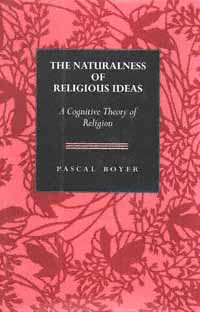 | Title: The naturalness of religious ideas: a cognitive theory of religion Author: Boyer, Pascal Published: University of California Press, 1994 Subjects: Anthropology | Philosophy | Psychology Publisher's Description: Why do people have religious ideas? And why those religious ideas? The main theme of Pascal Boyer's work is that important aspects of religious representations are constrained by universal properties of the human mind-brain. Experimental results from developmental psychology, he says, can explain why certain religious representations are more likely to be acquired, stored, and transmitted by human minds. Considering these universal constraints, Boyer proposes an exciting new answer to the question of why similar religious representations are found in so many different cultures. His work will be widely discussed by cultural anthropologists, psychologists, and students of religion, history, and philosophy. [brief] Similar Items |
| 2. | 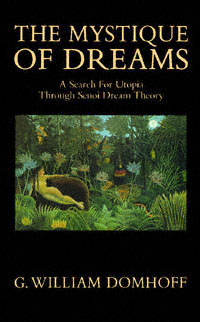 | Title: The mystique of dreams: a search for utopia through Senoi dream theory Author: Domhoff, G. William Published: University of California Press, 1990 Subjects: Sociology | Psychology | Anthropology Publisher's Description: A fascinating strand of the human potential movement of the 1960s involved the dream mystique of a previously unknown Malaysian tribe, the Senoi, first brought to the attention of the Western world by adventurer-anthropologist-psychologist Kilton Stewart. Exploring the origin, attraction, and efficacy of the Senoi ideas, G. William Domhoff also investigates current research on dreams and concludes that the story of Senoi dream theory tells us more about certain aspects of American culture than it does about this distant tribe. In analyzing its mystical appeal, he comes to some unexpected conclusions about American spirituality and practicality. [brief] Similar Items |
| 3. | 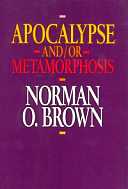 | Title: Apocalypse and/or metamorphosis Author: Brown, Norman Oliver 1913- Published: University of California Press, 1991 Subjects: Philosophy | Psychology | History Publisher's Description: Here is the final volume of Norman O. Brown's trilogy on civilization and its discontents, on humanity's long struggle to master its instincts and the perils that attend that denial of human nature. Following on his famous books Life Against Death and Love's Body , this collection of eleven essays brings Brown's thinking up to 1990 and the fall of Communism in Eastern Europe.Brown writes that "the prophetic tradition is an attempt to give direction to the social structure precipitated by the urban revolution; to resolve its inherent contradictions; to put an end to its injustice, inequality, anomie, the state of war . . . that has been its history from start to finish." Affiliating himself with prophets from Muhammad to Blake and Emerson, Brown offers further meditations on what's wrong with Western civilization and what we might do about it. Thus the duality in his title: crisis and the hope for change. In pieces both poetic and philosophical, Brown's attention ranges over Greek mythology, Islam, Spinoza, and Finnegan's Wake . The collection includes an autobiographical essay musing on Brown's own intellectual development. The final piece, "Dionysus in 1990," draws on Freud and the work of Georges Bataille to link the recent changes in the world's economies with mankind's primordial drive to accumulation, waste, and death. [brief] Similar Items |
| 4. | 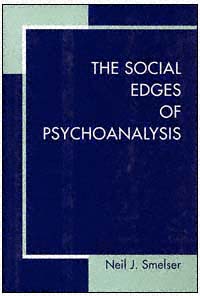 | Title: The social edges of psychoanalysis Author: Smelser, Neil J Published: University of California Press, 1999 Subjects: Sociology | Social Theory | Psychology Publisher's Description: For several decades the writings of sociologist Neil J. Smelser have won him a vast and admiring audience across several disciplines. Best known for his work on social movements, economic sociology, and British social history, Smelser's psychoanalytic writings are less familiar to his readers. In fact, many people are completely unaware of Smelser's formal psychoanalytic training and ongoing counseling practice. With the publication of The Social Edges of Psychoanalysis , Smelser's thought-provoking essays on psychoanalytic concepts are finally brought together in one book.Psychoanalytic theory has had an ambivalent relationship with sociology, and these essays explore that ambivalence, providing arguments about how and why psychoanalytic approaches can deepen the sociological perspective. One of Smelser's main tenets is that human social behavior always contains both social-structural and social-psychological elements, and that psychoanalytic theory can bridge these two dimensions of human social life. Many of the issues Smelser addresses - including interdisciplinarity, the macro-micro link in research, masculinity and violence, and affirmative action - have generated considerable scholarly interest.This collection paves the way for further articulation of the relationship between sociology and psychoanalysis at a time when many sociologists are looking for interdisciplinary links in their work. Presented with clarity and grace, and free of the murkiness often found in both sociological and psychoanalytic writing, Smelser's new book will excite reflection and research on the less visible dynamics of social existence. [brief] Similar Items |
| 5. |  | Title: The mind's past Author: Gazzaniga, Michael S Published: University of California Press, 1998 Subjects: Science | Psychology | Cognitive Science | Neuroscience Publisher's Description: Why does the human brain insist on interpreting the world and constructing a narrative? In this ground-breaking work, Michael S. Gazzaniga, one of the world's foremost cognitive neuroscientists, shows how our mind and brain accomplish the amazing feat of constructing our past - a process clearly fraught with errors of perception, memory, and judgment. By showing that the specific systems built into our brain do their work automatically and largely outside of our conscious awareness, Gazzaniga calls into question our everyday notions of self and reality. The implications of his ideas reach deeply into the nature of perception and memory, the profundity of human instinct, and the ways we construct who we are and how we fit into the world around us.Over the past thirty years, the mind sciences have developed a picture not only of how our brains are built but also of what they were built to do. The emerging picture is wonderfully clear and pointed, underlining William James's notion that humans have far more instincts than other animals. Every baby is born with circuits that compute information enabling it to function in the physical world. Even what helps us to establish our understanding of social relations may have grown out of perceptual laws delivered to an infant's brain. Indeed, the ability to transmit culture - an act that is only part of the human repertoire - may stem from our many automatic and unique perceptual-motor processes that give rise to mental capacities such as belief and culture.Gazzaniga explains how the mind interprets data the brain has already processed, making "us" the last to know. He shows how what "we" see is frequently an illusion and not at all what our brain is perceiving. False memories become a part of our experience; autobiography is fiction. In exploring how the brain enables the mind, Gazzaniga points us toward one of the greatest mysteries of human evolution: how we become who we are. [brief] Similar Items |
| 6. | 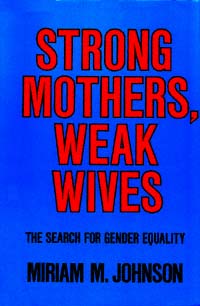 | Title: Strong mothers, weak wives: the search for gender equality Author: Johnson, Miriam M Published: University of California Press, 1988 Subjects: Sociology | Psychology | Women's Studies Publisher's Description: A leading theorist in the sociology of sex and gender, Miriam Johnson establishes as her starting point the belief that inequality is not inherent or inevitable in heterosexual relations. In Strong Mothers, Weak Wives she develops this notion by examining how gender differences get translated into g . . . [more] Similar Items |
| 7. | 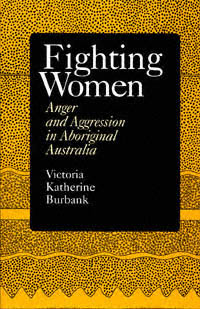 | Title: Fighting women: anger and aggression in Aboriginal Australia Author: Burbank, Victoria Katherine Published: University of California Press, 1994 Subjects: Anthropology | Women's Studies | Psychology Publisher's Description: Fighting is common among contemporary Aboriginal women in Mangrove, Australia - women fight with men and with other women. Victoria Burbank's depiction of these women offers a powerful new perspective that can be applied to domestic violence in Western settings.Noting that Aboriginal women not only talk without shame about their emotions of anger but also express them in acts of aggression and defense, Burbank emphasizes the positive social and cultural implications of women's refusal to be victims. She explores questions of hierarchy and the expression of emotions, as well as women's roles in domestic violence. Human aggression can be experienced and expressed in different ways, she says, and is not necessarily always "wrong." Timely and controversial, Fighting Women will stimulate discussion of aggression and gender relations and will enlarge the debate on the victimization of women and children everywhere. [brief] Similar Items |
| 8. |  | Title: Origins of architectural pleasure Author: Hildebrand, Grant 1934- Published: University of California Press, 1999 Subjects: Architecture | Environmental Studies | Psychology Publisher's Description: Do survival instincts have anything to do with our architectural choices - our liking for a certain room, a special stairway, a plaza in a particular city? In this engaging study Grant Hildebrand discusses ways in which architectural forms emulate some archetypal settings that humans have found appealing - and useful to survival - from ancient times to the present.Speculating that nature has "designed" us to prefer certain conditions and experiences, Hildebrand is interested in how the characteristics of our most satisfying built environments mesh with Darwinian selection. In examining the appeal of such survival-based characteristics he cites architectural examples spanning five continents and five millennia. Among those included are the Palace of Minos, the Alhambra, Wells cathedral, the Shinto shrine at Ise, the Piazza San Marco, Brunelleschi's Pazzi Chapel, Frank Lloyd Wright's Fallingwater, a Seattle condominium, and recent houses by Eric Owen Moss and Arne Bystrom.Just what characteristics bestow evolutionary benefits? "Refuge and prospect" offer a protective place of concealment close to a foraging and hunting ground. "Enticement" invites the safe exploration of an information-rich setting where worthwhile discoveries await. "Peril" elicits an emotion of pleasurable fear and so tests and increases our competence in the face of danger: thus the attraction of a skyscraper or a house poised over a vertiginous ravine. "Order and complexity" tease our intuitions for sorting complex information into survival-useful categories.Gracefully written, with excellent illustrations that complement the text, Origins of Architectural Pleasure will open the reader's eyes to new ways of seeing a home, a workplace, a vacation setting, even a particular table in a restaurant. It also suggests important design considerations for buildings with a more pressing mandate for human appeal, such as hospitals, retirement homes, and hospices. [brief] Similar Items |
| 9. | 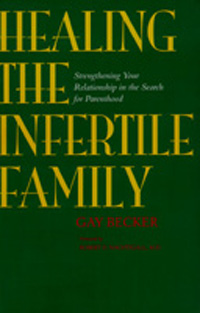 | Title: Healing the infertile family: strengthening your relationship in the search for parenthood Author: Becker, Gaylene Published: University of California Press, 1997 Subjects: Anthropology | Medical Anthropology | Psychology Publisher's Description: Unlike most infertility books that focus on medical treatment, Healing the Infertile Family examines the social and emotional problems experienced by couples confronting infertility and suggests how they can be alleviated. In this updated edition, Gay Becker discusses her most recent study of couple . . . [more] Similar Items |
| 10. | 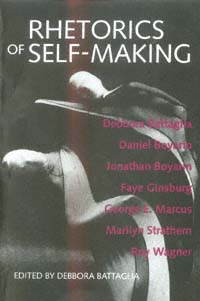 | Title: Rhetorics of self-making Author: Battaglia, Debbora Published: University of California Press, 1995 Subjects: Anthropology | Cultural Anthropology | Psychology Publisher's Description: Departing from an essentialist concept of the self, this highly original volume advances the cross-cultural study of selfhood with three contributions to the literature: First, it approaches the self as an ideological process, arguing that selfhood is culturally situated and emergent in social practices of persuasion. Second, it demonstrates how postmodernity problematizes the experience and concept of the self. Finally, the book challenges the pervasive practice of equating an individuated self with the Western world and a relational self with the non-Western world. Contributions cover a broad range of topics - from the development of the eccentric self to the ritual circumcision of Jewish males. [brief] Similar Items |
| 11. | 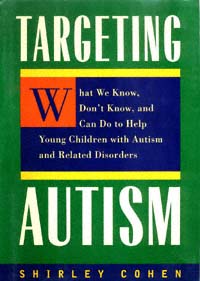 | Title: Targeting autism: what we know, don't know, and can do to help young children with autism and related disorders Author: Cohen, Shirley Published: University of California Press, 1998 Subjects: Sociology | Social Problems | Education | Psychology | Psychiatry | Medicine Similar Items |
| 12. | 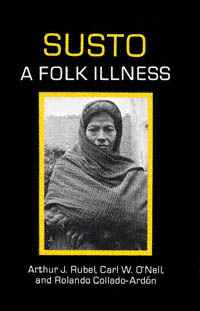 | Title: Susto, a folk illness Author: Rubel, Arthur J Published: University of California Press, 1984 Subjects: Anthropology | Medical Anthropology | Latin American Studies | Psychology Publisher's Description: Widespread throughout Latin America, susto is a folk illness associated with a broad array of symptoms. It is considered by susceptible populations to be a sickness caused by the separation of soul and body which is precipitated by a supernatural force. Most studies of culture-bound diseases have relied on descriptive approaches that focus on pathologies derived from medical textbooks. This study takes an interdisciplinary approach, looking for explanations of susto in the interaction of social, physiological, and psychological factors. [brief] Similar Items |
| 13. | 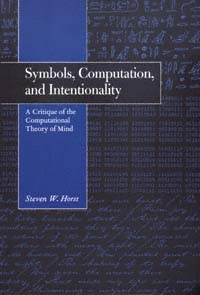 | Title: Symbols, computation, and intentionality: a critique of the computational theory of mind Author: Horst, Steven W 1960- Published: University of California Press, 1996 Subjects: Philosophy | Social and Political Thought | Psychology Publisher's Description: The computational theory of mind - the belief that the mind can be likened to a computer and that cognitive states possess the generative and compositional properties of natural languages - has proven enormously influential in recent philosophical studies of cognition. In this carefully argued critique, Steven Horst pronounces the theory deficient. He refutes its claims and assumptions, particularly the assertion that symbolic representations need not have conventional meaning. Horst goes on to sketch a new methodology for looking at the philosophy of psychology, one that provides a more fruitful way of comparing computational psychology with rival views emerging from connectionism and neuroscience. Original and comprehensive, his book is certain to provoke controversy and stimulate debate. [brief] Similar Items |
| 14. |  | Title: Imperial bedlam: institutions of madness in colonial southwest Nigeria Author: Sadowsky, Jonathan Hal Published: University of California Press, 1999 Subjects: African Studies | Psychology | African History | Medicine | Social Problems Publisher's Description: The colonial government of southern Nigeria began to use asylums to confine the allegedly insane in 1906. These asylums were administered by the British but confined Africans. Yet, as even many in the government recognized, insanity is a condition that shows cultural variation. Who decided the inmates were insane and how? This sophisticated historical study pursues these questions as it examines fascinating source material - writings by African patients in these institutions and the reports of officials, doctors, and others - to discuss the meaning of madness in Nigeria, the development of colonial psychiatry, and the connections between them. Jonathan Sadowsky's well-argued, concise study provides important new insights into the designation of madness across cultural and political frontiers. Imperial Bedlam follows the development of insane asylums from their origins in the nineteenth century to innovative treatment programs developed by Nigerian physicians during the transition to independence. Special attention is given to the writings of those considered "lunatics," a perspective relatively neglected in previous studies of psychiatric institutions in Africa and most other parts of the world. Imperial Bedlam shows how contradictions inherent in colonialism were articulated in both asylum policy and psychiatric theory. It argues that the processes of confinement, the labeling of insanity, and the symptoms of those so labeled reflected not only cultural difference but also political divides embedded in the colonial situation. Imperial Bedlam thus emphasizes not only the cultural background to madness but also its political and experiential dimensions. [brief] Similar Items |
| 15. |  | Title: Natural conflict resolution Author: Aureli, Filippo 1962- Published: University of California Press, 2000 Subjects: Science | Zoology | Psychology | Cultural Anthropology | Politics | Sociology Publisher's Description: Aggression and competition are customarily presented as the natural state of affairs in both human society and the animal kingdom. Yet, as this book shows, our species relies heavily on cooperation for survival as do many others - from wolves and dolphins to monkeys and apes. A distinguished group of fifty-two authors, including many of the world's leading experts on human and animal behavior, review evidence from multiple disciplines on natural conflict resolution, making the case that reconciliation and compromise are as much a part of our heritage as is waging war. Chimpanzees kiss and embrace after a fight. Children will appeal to fairness when fighting over a toy. Spotted hyenas, usually thought to be a particularly aggressive species, use reconciliation to restore damaged relationships. As these studies show, there are sound evolutionary reasons for these peacekeeping tendencies. This book also addresses the cultural, ecological, cognitive, emotional, and moral perspectives of conflict resolution. [brief] Similar Items |
| 16. | 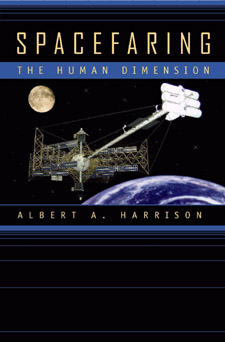 | Title: Spacefaring: the human dimension Author: Harrison, Albert A Published: University of California Press, 2001 Subjects: Science | Technology and Society | Psychology Publisher's Description: The stars have always called us, but only for the past forty years or so have we been able to respond by traveling in space. This book explores the human side of spaceflight: why people are willing to brave danger and hardship to go into space; how human culture has shaped past and present missions; and the effects of space travel on health and well-being. A comprehensive and authoritative treatment of its subject, this book combines statistical studies, rich case histories, and gripping anecdotal detail as it investigates the phenomenon of humans in space - from the earliest spaceflights to the missions of tomorrow. Drawing from a strong research base in the behavioral sciences, Harrison covers such topics as habitability, crew selection and training, coping with stress, group dynamics, accidents, and more. In addition to taking a close look at spacefarers themselves, Spacefaring reviews the broad organizational and political contexts that shape human progress toward the heavens. With the ongoing construction of the International Space Station, the human journey to the stars continues, and this book will surely help guide the way. [brief] Similar Items |
| 17. | 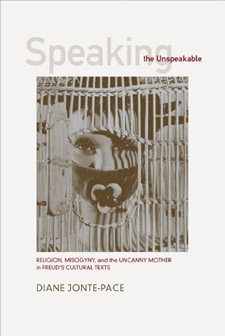 | Title: Speaking the unspeakable: religion, misogyny, and the uncanny mother in Freud's cultural texts Author: Jonte-Pace, Diane E. (Diane Elizabeth) 1951- Published: University of California Press, 2001 Subjects: Religion | Literature | Gender Studies | Jewish Studies | Psychology Publisher's Description: In this bold rereading of Freud's cultural texts, Diane Jonte-Pace uncovers an undeveloped "counterthesis," one that repeatedly interrupts or subverts his well-known Oedipal masterplot. The counterthesis is evident in three clusters of themes within Freud's work: maternity, mortality, and immortality; Judaism and anti-Semitism; and mourning and melancholia. Each of these clusters is associated with "the uncanny" and with death and loss. Appearing most frequently in Freud's images, metaphors, and illustrations, the counterthesis is no less present for being unspoken--it is, indeed, "unspeakable." The "uncanny mother" is a primary theme found in Freud's texts involving fantasies of immortality and mothers as instructors in death. In other texts, Jonte-Pace finds a story of Jews for whom the dangers of assimilation to a dominant Gentile culture are associated unconsciously with death and the uncanny mother. The counterthesis appears in the story of anti-Semites for whom the "uncanny impression of circumcision" gives rise not only to castration anxiety but also to matriphobia. It also surfaces in Freud's ability to mourn the social and religious losses accompanying modernity, and his inability to mourn the loss of his own mother. The unfolding of Freud's counterthesis points toward a theory of the cultural and unconscious sources of misogyny and anti-Semitism in "the unspeakable." Jonte-Pace's work opens exciting new vistas for the feminist analysis of Freud's intellectual legacy. [brief] Similar Items |
| 18. | 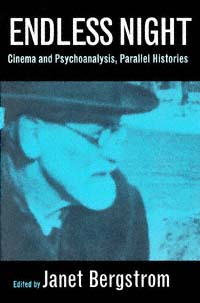 | Title: Endless night: cinema and psychoanalysis, parallel histories Author: Bergstrom, Janet 1946- Published: University of California Press, 1999 Subjects: Cinema and Performance Arts | Art Theory | Psychology Publisher's Description: The "endless night" that film theory and psychoanalysis share is the darkness that these two disciplines face in their quest for the logics of intelligibility. This collection emphasizes the history of theory to demonstrate that film theory must be written with a strong sense of historical consciousness, curiosity, and archaeological craft. The volume brings together film theorists and practicing psychoanalysts to encourage an exchange of views between disciplines that encounter each other all too rarely. [brief] Similar Items |
| 19. | 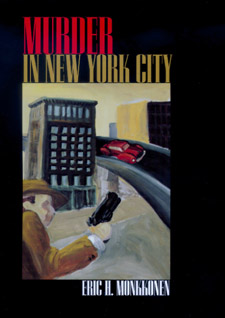 | Title: Murder in New York City Author: Monkkonen, Eric H 1942- Published: University of California Press, 2001 Subjects: American Studies | Psychology | Criminology | United States History Publisher's Description: Murder in New York City dramatically expands what we know about urban homicide, and challenges some of the things we think we know. Eric Monkkonen's unprecedented investigation covers two centuries of murder in America's biggest city, combining newly assembled statistical evidence with many other documentary sources to tease out the story behind the figures. As we generally believe, the last part of the twentieth century was unusually violent, but there have been other high-violence eras as well: the late 1920s and the mid-nineteenth century, the latter because the absence of high-quality weapons and ammunition makes that era's stabbings and beatings seem almost more vicious. Monkkonen's long view allows us to look back to a time when guns were rarer, when poverty was more widespread, and when racial discrimination was more intense, and to ask what difference these things made. With many vivid case studies for illustration, he examines the crucial factors in killing through the years: the weapons of choice, the sex and age of offenders and victims, the circumstances and settings in which homicide tends to occur, and the race and ethnicity of murderers and their victims. In a final chapter, Monkkonen looks to the international context and shows that New York - and, by extension, the United States - has had consistently higher violence levels than London and Liverpool. No single factor, he says, shapes this excessive violence, but exploring the variables of age, ethnicity, weapons, and demography over the long term can lead to hope of changing old patterns. [brief] Similar Items |
| 20. | 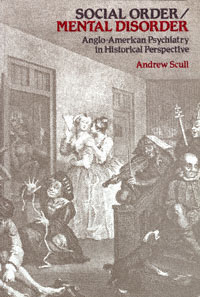 | Title: Social order/mental disorder: Anglo-American psychiatry in historical perspective Author: Scull, Andrew T Published: University of California Press, 1989 Subjects: Sociology | Psychiatry | United States History | European History | Psychology Similar Items |